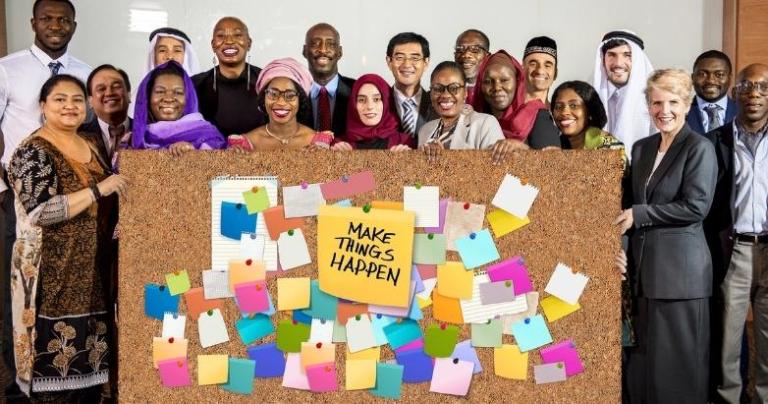
There is a tremendous need for interfaith dialogue in the modern world. When done right, dialogue can ease tensions, reduce anxiety, build trust, increase empathy, and change perceptions. However, when done wrong, it can cement distrust, fortify stereotypes, and deepen divides. The wrong way, in this context, is to bring total strangers together and lead with the most controversial topic that you can find. It doesn’t take an active imagination to see where that will end.
If you are interested in improving relations—both between people of different faiths and between people of no religion and the faithful—allow me to offer a step-by-step approach that has served the interfaith community well.
Step 1) Get to Know the ‘Other’
The first step is to give people a chance to get to know each other as human beings. Have them eat together and talk about their shared humanity, including where they grew up, where they have lived, their family, their work, their worries, etc.
Keep the Maslow hierarchy of needs in mind. The lower in the pyramid, the more universal the needs are and the easier they are to talk about. Leave religion and heated issues out of the discussion, to begin with.
Step 2) Dive Deeper Into Areas of Shared Humanity
Once people see each other as equally human, begin talking about shared human interests and emotional concepts that everyone shares. Many interfaith organizations have come together to combat humanitarian issues such as poverty, climate change, and discrimination. In contrast, others have decided to focus on aspirational aspects in their dialogues and discuss topics such as hope, love, compassion, home, harmony, justice, peace, etc.
When people talk about issues that all human beings share, even if their approaches are different, they will see similarities where they saw none before.
Step 3) Learn About Other Beliefs
Some people are naturally comfortable with jumping straight into step three and start learning about other people’s beliefs, theologies, cultures and traditions. For those participants, such learning is why they engage in interfaith dialogue. Lectures can be helpful in this context, but learning about people’s personal experiences as they relate to scripture and traditions (lived religion) in small discussion groups gives the sharing experience a human touch that is more memorable and relatable.
Step 4) Discuss Difficult Issues
Once a foundation has been laid, it is possible to have more difficult discussions about controversial issues, everything from theological differences to political divides. The first three steps have allowed participants to establish empathy and trust (usually over a period of several months, years even). Once that has been done, there is less chance of the whole thing blowing up because of differing ideologies. Ensure that you have well-trained moderators or mediators on hand when you venture into the deep end.
“But, I Came Here to Talk About…”
Today, arguments are common, especially online. The problem with most of those arguments is that people are not getting convinced of anything except their own righteousness. Their goal seems to be to land a punch, belittle ‘the other’ or show off in front of their like-minded ideological tribe.
Regrettably, those same attitudes of ‘hitting people where it hurts’ sometimes bleed into interfaith dialogue settings. I’ve met several people over the last few years that were impatient with the friendly tenor of interreligious dialogue. “This is B.S.,” they’ve told me. “I came here to talk about [insert the heated issue of the day], not this.” They wanted to fight and came armed with talking points.
What is the Goal?
Since you’ve read this far, your goal is probably to make headway in dialogue, ease tensions rather than agitate, dispel stereotypes rather than pigeonhole adversaries, increase empathy rather than sow intolerance, and build bridges, not widen chasms. In that case, it is better to take the long road, to build interfaith dialogue step-by-step until there is enough trust to talk about the difficult issues at hand.
I am not suggesting that people of different faiths should agree on everything, but when they see each other as equally human, they usually want to keep talking, even if they differ. That’s the whole point of the exercise.
Gudjon Bergmann
Author and Mindfulness Teacher
Amazon Author Profile
Recommended books:
- Monk of All Faiths: Inspired by The Prophet (fiction)
- Spiritual in My Own Way (memoir)
- Co-Human Harmony: Using Our Shared Humanity to Bridge Divides (nonfiction)
- Experifaith: At the Heart of Every Religion (nonfiction)
- Premature Holiness: Five Weeks at the Ashram (novel)
- The Meditating Psychiatrist Who Tried to Kill Himself (novel)
Picture: CC0 License












